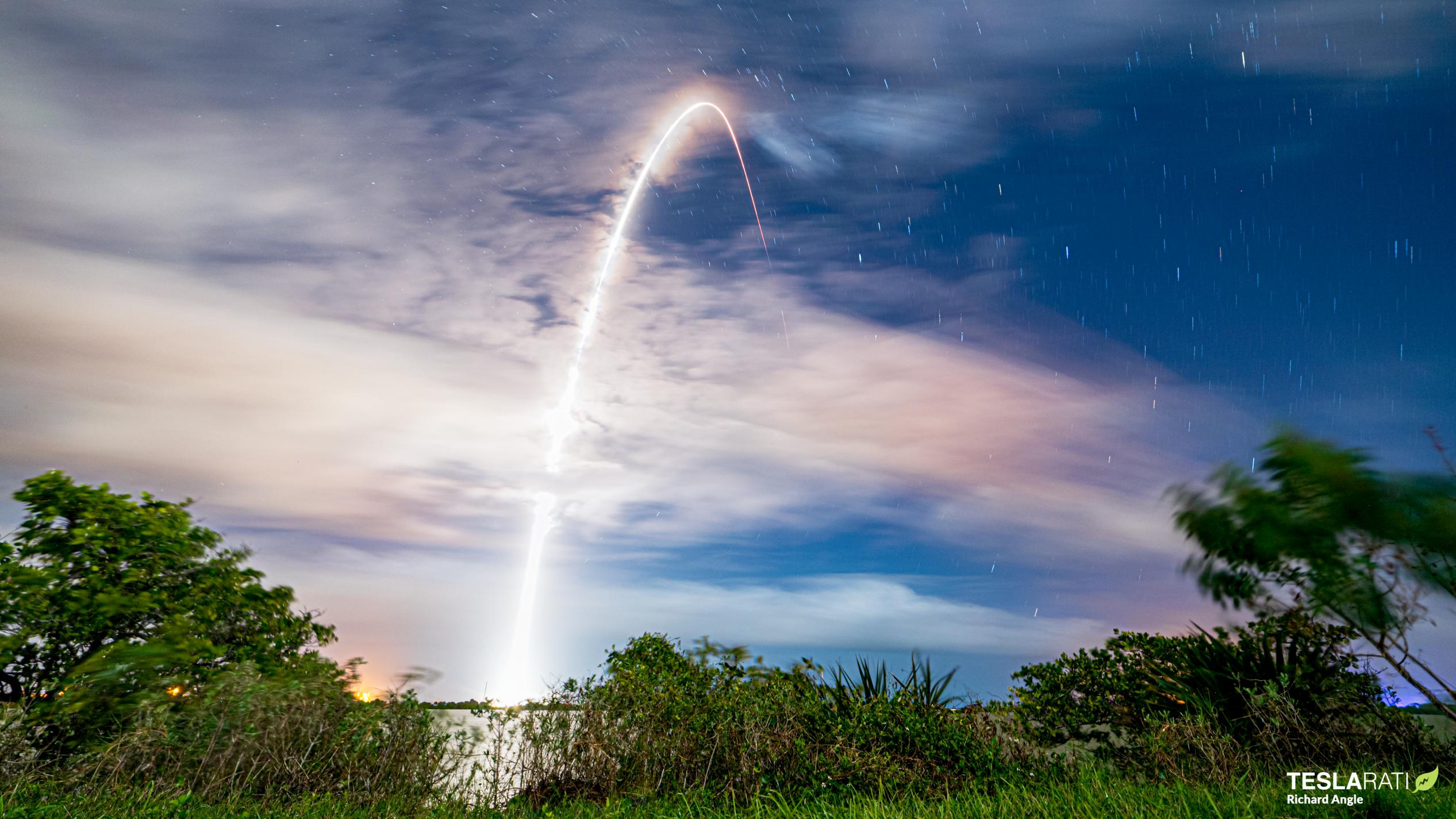
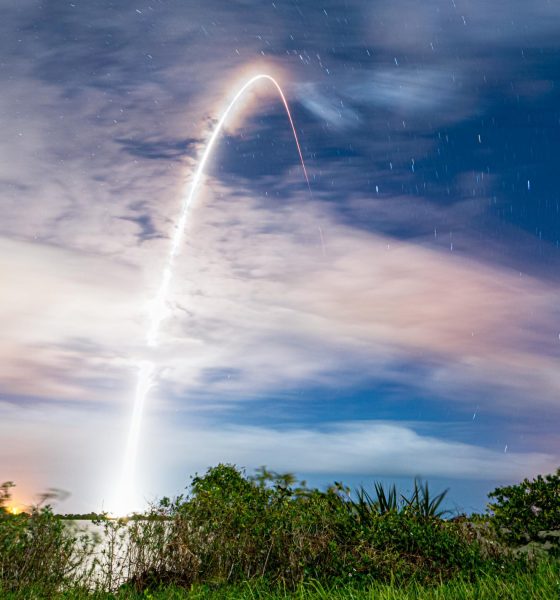
News
A SpaceX rocket just aced its seventh launch and landing for the first time
For the first time ever, a SpaceX Falcon 9 rocket booster has successfully completed seven orbital-class launches and landings, leaving the company as few as three flights away from achieving its longstanding reusability goal.
Ending two days of “mission assurance” and weather-related delays, Falcon 9 booster B1049.6, a new expendable upper stage (S2), two flight-proven fairing halves, and 60 Starlink v1.0 satellites lifted off at 9:13 pm EST on November 24th. As usual, the rocket appeared to perform flawlessly, sailing through main engine cut-off (MECO), second stage start (SES), and first stage reentry and landing. Falcon 9 successfully touched down on drone ship Of Course I Still Love You (OCISLY) around 8.5 minutes after liftoff, officially making booster B1049 the first to complete (and survive) seven orbital-class launches.
For SpaceX, the success means that the company now has a new rocket booster “fleet leader,” referring to the fact that B1049.7 will now serve as a reference point and treasure trove of data for other SpaceX rockets pushing towards the same reusability milestone. Reuse record aside, SpaceX’s flawless Starlink-15 launch also pushed the company passed an arguably equally – if not more – important operational milestone.
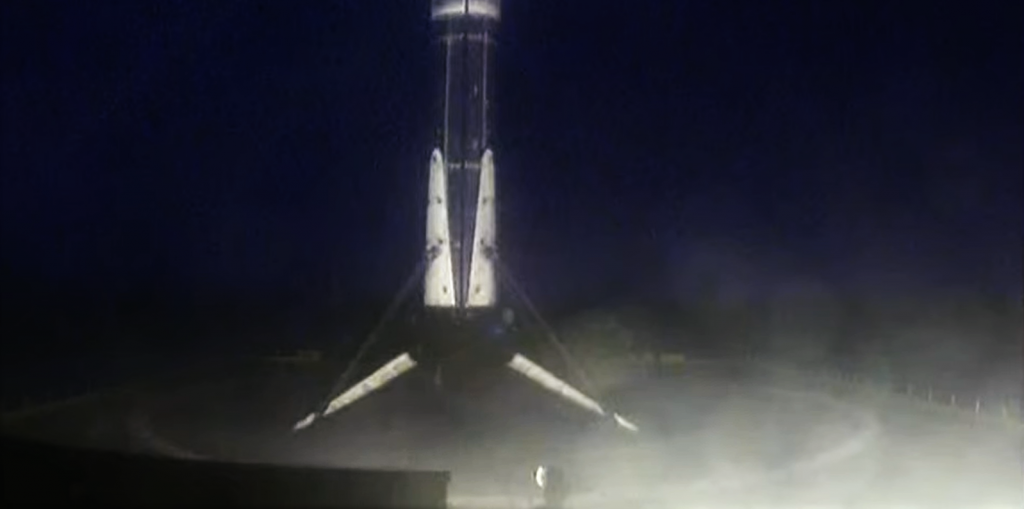
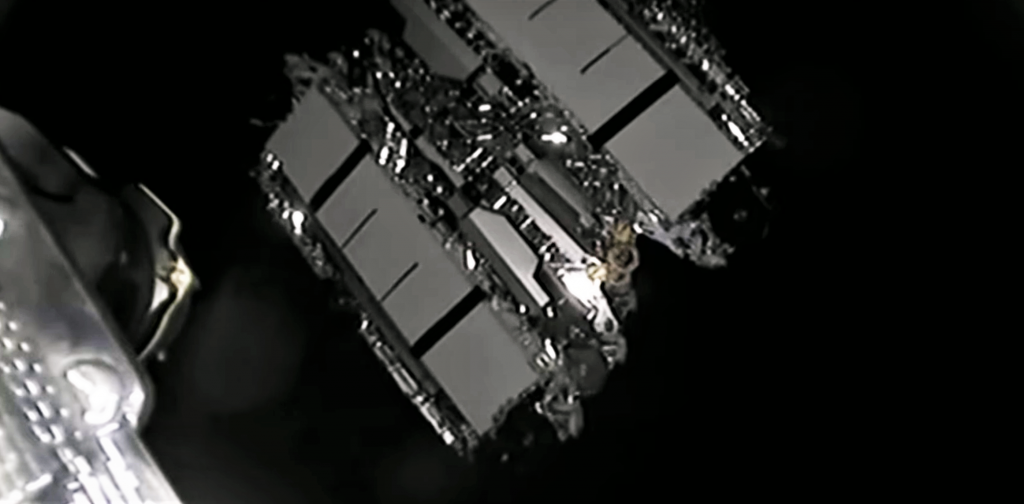
Specifically, November 2020 is now SpaceX’s first four-launch month ever, handing Falcon 9 an achievement that only a few rockets in history can lay claim to. Crucially, extrapolated out to a full calendar year, achieving four orbital launches in one month directly implies that SpaceX is well within reach of an annual cadence of 40 launches or more.
Coming just ~6 weeks after CEO Elon Musk revealed an ambitious target of 48 launches in 2021, SpaceX has certainly delivered its first four-launch month at the best possible time. Even if four-launch months are not immediately sustainable, the achievement brings significant confidence that SpaceX will be able to crush its already record-breaking 2020 launch cadence next year.
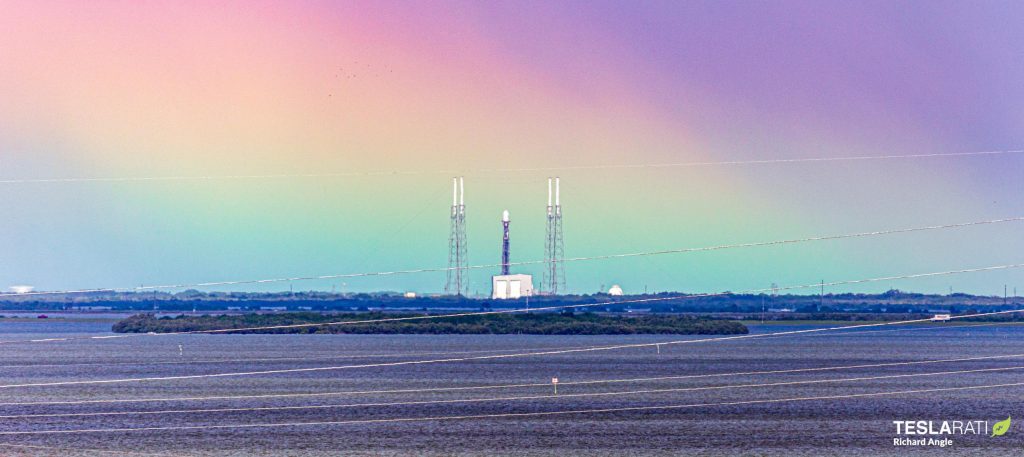
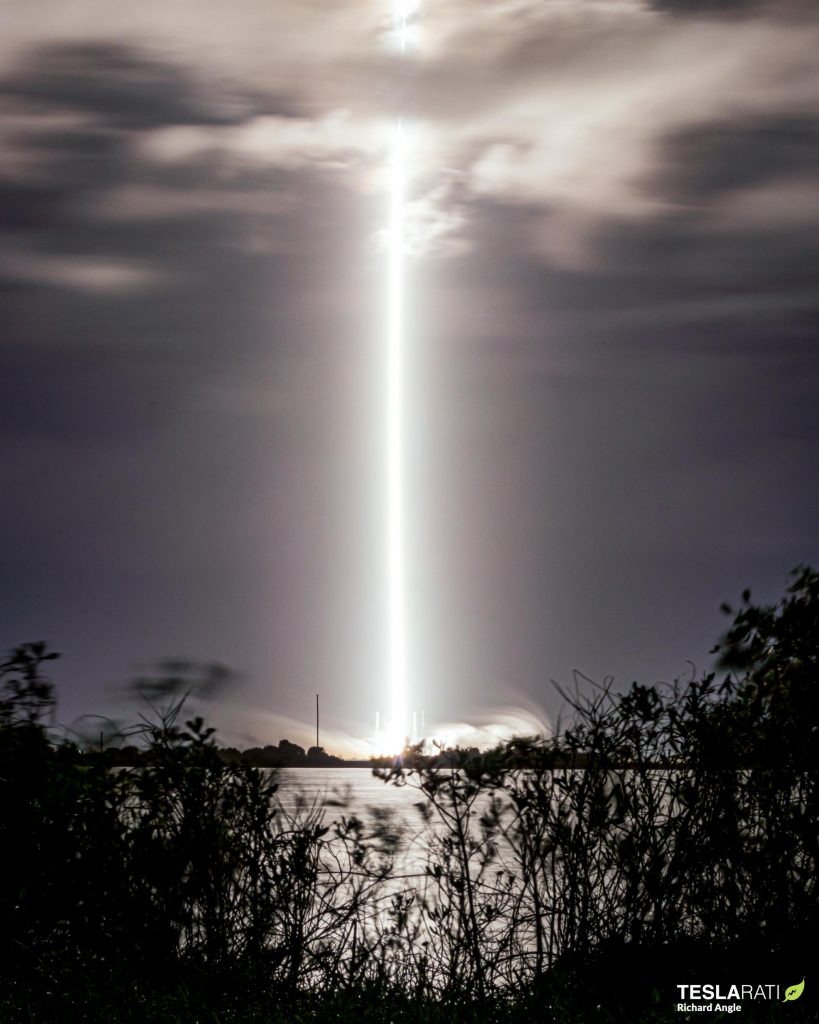
Technically, Starlink-15’s completion means that SpaceX has actually managed 4 launches in 19 days and 7 launches in the last ~50 days, representing an average of one launch every 4.75-7 days. Extrapolated over a full year, SpaceX has effectively demonstrated that its Falcon 9 infrastructure is already capable of achieving an annual cadence of 50-75 launches even if several technical bugs or weather delays arise every month.
Reusability is as essential as ever for SpaceX’s extremely ambitious launch cadence targets. The introduction of three new Falcon 9 boosters in just the last three weeks will almost certainly provide some relief to SpaceX’s hardworking rocket fleet while also offering even more capacity to strive towards an annual average of four or more launches per month. B1049 effectively opening up a new tier of reusability and taking SpaceX just three steps away from its original ten-flight reusability goal also serves as a force multiplier for the fleet, adding at least another seven launches of capacity.
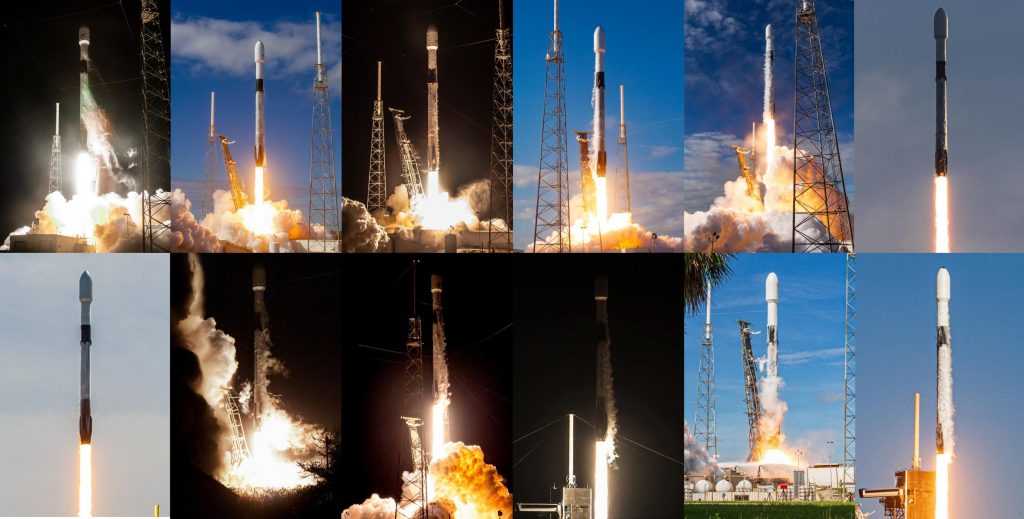
Now eight boosters strong, SpaceX’s flight-proven Falcon 9 fleet could theoretically support a rough average of one launch per week, though the flight rate of three boosters (B1061, B1062, and B1063) will be somewhat handicapped due to their recent assignments to several major NASA and US military launches. Ultimately, while SpaceX has a plenty of work left in front of it, the company is well on its way to becoming the world’s most prolific and experienced launch provider by a healthy margin.

News
Tesla Model 3 named New Zealand’s best passenger car of 2025
Tesla flipped the switch on Full Self-Driving (Supervised) in September, turning every Model 3 and Model Y into New Zealand’s most advanced production car overnight.
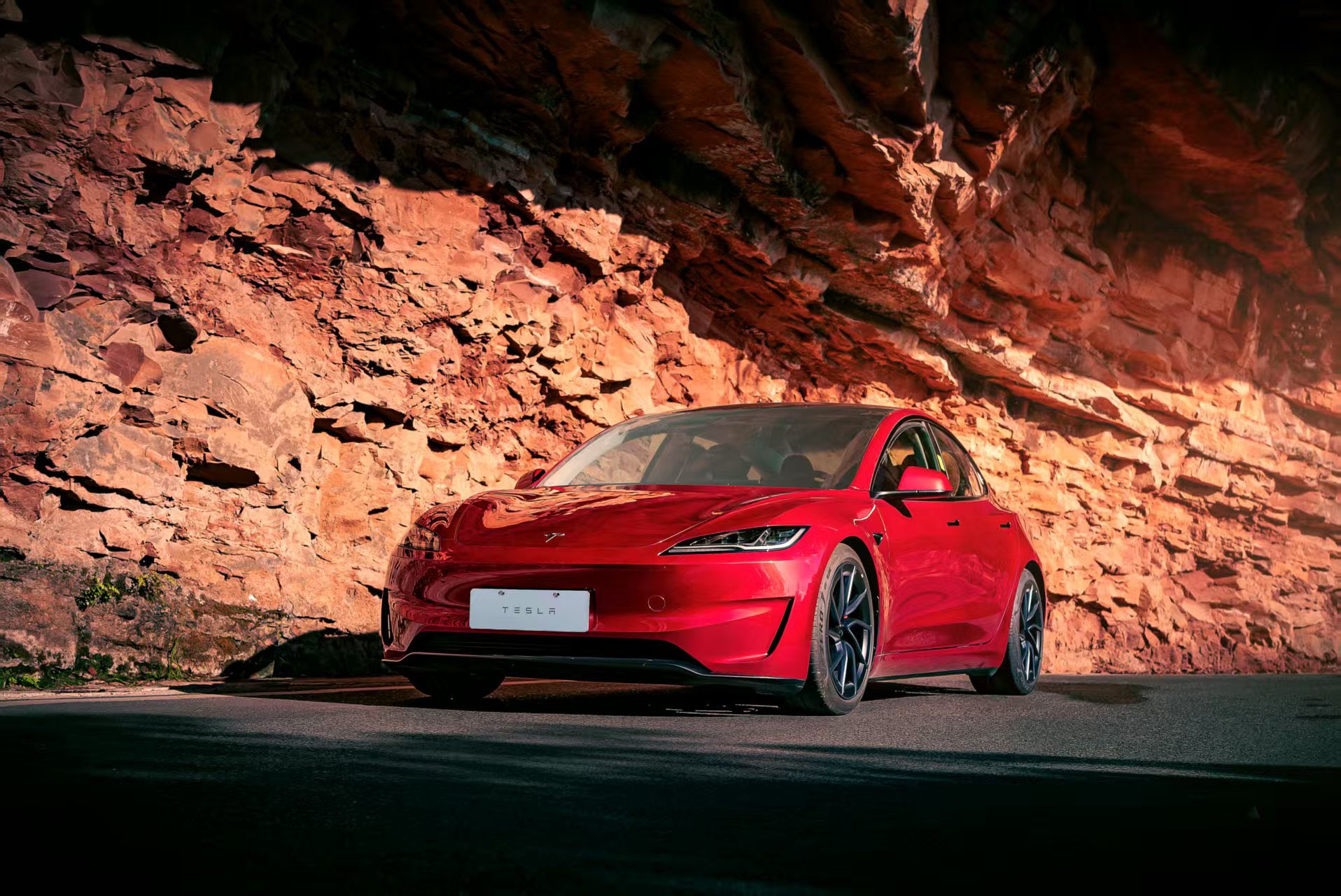
The refreshed Tesla Model 3 has won the DRIVEN Car Guide AA Insurance NZ Car of the Year 2025 award in the Passenger Car category, beating all traditional and electric rivals.
Judges praised the all-electric sedan’s driving dynamics, value-packed EV tech, and the game-changing addition of Full Self-Driving (Supervised) that went live in New Zealand this September.
Why the Model 3 clinched the crown
DRIVEN admitted they were late to the “Highland” party because the updated sedan arrived in New Zealand as a 2024 model, just before the new Model Y stole the headlines. Yet two things forced a re-evaluation this year.
First, experiencing the new Model Y reminded testers how many big upgrades originated in the Model 3, such as the smoother ride, quieter cabin, ventilated seats, rear touchscreen, and stalk-less minimalist interior. Second, and far more importantly, Tesla flipped the switch on Full Self-Driving (Supervised) in September, turning every Model 3 and Model Y into New Zealand’s most advanced production car overnight.
FSD changes everything for Kiwi buyers
The publication called the entry-level rear-wheel-drive version “good to drive and represents a lot of EV technology for the money,” but highlighted that FSD elevates it into another league. “Make no mistake, despite the ‘Supervised’ bit in the name that requires you to remain ready to take control, it’s autonomous and very capable in some surprisingly tricky scenarios,” the review stated.
At NZ$11,400, FSD is far from cheap, but Tesla also offers FSD (Supervised) on a $159 monthly subscription, making the tech accessible without the full upfront investment. That’s a game-changer, as it allows users to access the company’s most advanced system without forking over a huge amount of money.
News
Tesla starts rolling out FSD V14.2.1 to AI4 vehicles including Cybertruck
FSD V14.2.1 was released just about a week after the initial FSD V14.2 update was rolled out.

It appears that the Tesla AI team burned the midnight oil, allowing them to release FSD V14.2.1 on Thanksgiving. The update has been reported by Tesla owners with AI4 vehicles, as well as Cybertruck owners.
For the Tesla AI team, at least, it appears that work really does not stop.
FSD V14.2.1
Initial posts about FSD V14.2.1 were shared by Tesla owners on social media platform X. As per the Tesla owners, V14.2.1 appears to be a point update that’s designed to polish the features and capacities that have been available in FSD V14. A look at the release notes for FSD V14.2.1, however, shows that an extra line has been added.
“Camera visibility can lead to increased attention monitoring sensitivity.”
Whether this could lead to more drivers being alerted to pay attention to the roads more remains to be seen. This would likely become evident as soon as the first batch of videos from Tesla owners who received V14.21 start sharing their first drive impressions of the update. Despite the update being released on Thanksgiving, it would not be surprising if first impressions videos of FSD V14.2.1 are shared today, just the same.
Rapid FSD releases
What is rather interesting and impressive is the fact that FSD V14.2.1 was released just about a week after the initial FSD V14.2 update was rolled out. This bodes well for Tesla’s FSD users, especially since CEO Elon Musk has stated in the past that the V14.2 series will be for “widespread use.”
FSD V14 has so far received numerous positive reviews from Tesla owners, with numerous drivers noting that the system now drives better than most human drivers because it is cautious, confident, and considerate at the same time. The only question now, really, is if the V14.2 series does make it to the company’s wide FSD fleet, which is still populated by numerous HW3 vehicles.
News
Waymo rider data hints that Tesla’s Cybercab strategy might be the smartest, after all
These observations all but validate Tesla’s controversial two-seat Cybercab strategy, which has caught a lot of criticism since it was unveiled last year.

Toyota Connected Europe designer Karim Dia Toubajie has highlighted a particular trend that became evident in Waymo’s Q3 2025 occupancy stats. As it turned out, 90% of the trips taken by the driverless taxis carried two or fewer passengers.
These observations all but validate Tesla’s controversial two-seat Cybercab strategy, which has caught a lot of criticism since it was unveiled last year.
Toyota designer observes a trend
Karim Dia Toubajie, Lead Product Designer (Sustainable Mobility) at Toyota Connected Europe, analyzed Waymo’s latest California Public Utilities Commission filings and posted the results on LinkedIn this week.
“90% of robotaxi trips have 2 or less passengers, so why are we using 5-seater vehicles?” Toubajie asked. He continued: “90% of trips have 2 or less people, 75% of trips have 1 or less people.” He accompanied his comments with a graphic showing Waymo’s occupancy rates, which showed 71% of trips having one passenger, 15% of trips having two passengers, 6% of trips having three passengers, 5% of trips having zero passengers, and only 3% of trips having four passengers.
The data excludes operational trips like depot runs or charging, though Toubajie pointed out that most of the time, Waymo’s massive self-driving taxis are really just transporting 1 or 2 people, at times even no passengers at all. “This means that most of the time, the vehicle being used significantly outweighs the needs of the trip,” the Toyota designer wrote in his post.
Cybercab suddenly looks perfectly sized
Toubajie gave a nod to Tesla’s approach. “The Tesla Cybercab announced in 2024, is a 2-seater robotaxi with a 50kWh battery but I still believe this is on the larger side of what’s required for most trips,” he wrote.
With Waymo’s own numbers now proving 90% of demand fits two seats or fewer, the wheel-less, lidar-free Cybercab now looks like the smartest play in the room. The Cybercab is designed to be easy to produce, with CEO Elon Musk commenting that its product line would resemble a consumer electronics factory more than an automotive plant. This means that the Cybercab could saturate the roads quickly once it is deployed.
While the Cybercab will likely take the lion’s share of Tesla’s ride-hailing passengers, the Model 3 sedan and Model Y crossover would be perfect for the remaining 9% of riders who require larger vehicles. This should be easy to implement for Tesla, as the Model Y and Model 3 are both mass-market vehicles.









